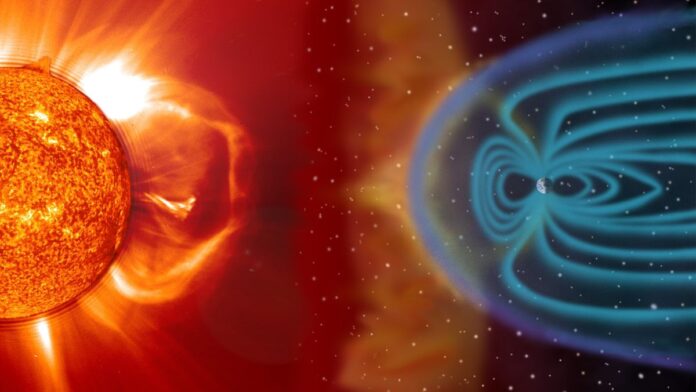Waves that are created as solar winds pummel Earth’s magnetic field appear to escape the turbulent region around our planet, but how they do so has remained a mystery.
Now, a research team has discovered how these waves seem to survive: They continue past the leading “foreshock” region to an area called the “shock” and then create “clone” waves with identical qualities, thus explaining how they appear to cross this region in near-Earth space. So, what astronomers had been observing for decades was not the waves created by the solar winds but rather the waves’ newly produced “clones.”
“How the waves would survive passing through the shock has remained a mystery since the waves were first discovered in the 1970s,” Lucile Turc, academy research fellow at the University of Helsinki in Finland and lead researcher on the study, said in a statement. “No evidence of those waves has ever been found on the other side of the shock.”
Related: Solar wind plays haunting music on Earth’s magnetic field
The magnetosphere is a magnetic bubble that protects Earth from charged particles from the sun called the solar wind by funneling these particles down magnetic-field lines and to the other side of our planet. The interaction between the supersonic solar wind and the terrestrial magnetic field creates the shock region, also known as the bow shock. The foreshock then forms “upstream” of this shock region.
The impact of solar winds causes electromagnetic waves to appear as small oscillations of Earth’s magnetic field. Waves with the same oscillations as waves in this foreshock region have been spotted on Earth’s sun-facing side, suggesting that they can enter the magnetosphere and travel all the way to the planet’s surface. But how could these waves cross the violent shock region and remain unchanged?
Turc and colleagues have been studying the propagation waves in the foreshock region for three years, turning to a computer model called Vlasiator to recreate and understand the physical processes at play in the wave transmission. By studying the simulation delivered by Vlasiator, a system developed at the University of Helsinki by research led by Minna Palmroth, the team found waves on the other side of the shock region that had properties that were almost exactly the same as those in the preceding foreshock area.
They followed this revelation by looking for signatures of these waves in satellite data and confirmed that the simulation was correct. But they still doubted that the waves could cross the shock and travel to Earth.
“At first, we thought that the initial theory proposed in the 1970s was correct: the waves could cross the shock unchanged,” Turc said. “But there was an inconsistency in the wave properties that this theory could not reconcile, so we investigated further. Eventually, it became clear that things were much more complicated than they seemed.
“The waves we saw behind the shock were not the same as those in the foreshock, but new waves created at the shock by the periodic impact of foreshock waves,” Turc said.
The team thinks that when solar winds flow across the shock, they compress and heat it, with the strength of the shock determining the extent to which this happens. The peaks and troughs in waves coming from the foreshock “tune” the shock as they arrive at it and make it alternate between periodically weak and strong space weather. This then creates new waves from the shock that are thus in concert with the foreshock waves. The Vlasiator simulation suggested that these waves should be detected only in a narrow region behind the shock and that they could easily be hidden by turbulence in this region. That may explain why these waves had not been observed previously.
The team’s research was published Dec. 19 in the journal Nature Physics (opens in new tab).
Follow us on Twitter @Spacedotcom or on Facebook.

